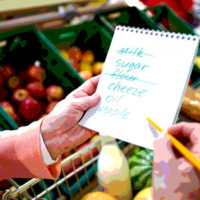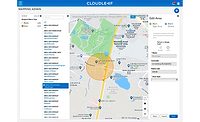Within the last decade, there’s no question that consumer attitudes and paths to purchase have changed significantly. We’ve moved from simply buying what was available at the store to the desire for greater validation of product ingredients, allergens and other information about products prior to purchase. Consumers are more empowered and curious than ever before.
Mobile devices make it possible to research a product from anywhere and consumers take advantage of this unprecedented access to information to make better decisions about the foods they eat. A recent study found that out of consumers who use their mobile devices to research products, the majority (68%) of them use it to research nutritional information, look up brand/product information or watch product videos, according to the 2015 NinthDecimal Mobile Audience Insight Report. In the span of a single month, Google answers over 100 billion searches, and approximately one-third of all consumer packaged goods searches now originate from smartphones, according to Google reports.
This phenomenon represents a major opportunity for supply chain partners to enhance their traceability processes to respond to consumer demand for more transparency about the food they eat and its source.
Since the early 2000s, consumer demand for food transparency can be attributed in part to food reform advocates who started a national discussion about universal access to healthy, locally grown foods. Since then, restaurants everywhere position their short, transparent supply chains and farm-to-table values as major selling points. National foodservice operators like Chipotle have focused on traceability in their supply chain to ensure quality, safe foods for their consumers and also to maintain their commitment to environmental sustainability. Additionally, grocery retailers have changed the way they market to conscientious consumers, providing rating systems or special displays of sustainable foods, nutritious content and other features such as genetically modified organism-free or organic.
Aside from supply chain transparency’s environmental and diet-friendliness, allaying food safety fears is a true benefit of enhanced traceability as well. The passage of the Food Safety Modernization Act (FSMA) in 2011—the most comprehensive and sweeping food safety reforms in the last 70 years—formalized the movement to better protect today’s consumer. Supply chain partners have been focusing on improving their ability to trace products as they move through different stops in the supply chain in anticipation of the U.S. Food and Drug Administration’s proposed FSMA rules on traceability expected in early 2016.
While the average American may not be aware of the specifics of these regulations, they are asking questions about the safety of the food supply chain, especially with widespread media coverage of major food recalls still fresh in their minds—such as the recent Listeria outbreaks affecting spinach and ice cream products. Overall, the consumer’s expanded knowledge base is pushing the food industry to shift toward greater vigilance in many areas. Enhancing food safety requires many different levels of assurances, such as improvements in food handling and careful ingredient sourcing. But to better track and trace food, the industry needs increased collaboration between industry stakeholders using an inclusive, “whole-chain” approach to the food supply chain.
Whole-chain traceability is achieved when a company’s internal data and processes used within its own operations to track a product are integrated into a larger system of external data exchange and business processes that take place between trading partners. The use of one global language of business—the GS1 System of Standards—across the entire supply chain enables trading partners in the global supply chain to talk to one another through the identification encoded in the various types of barcodes. By using the same standards to identify and capture data about products, companies can share specific product information more efficiently and accurately, which ultimately benefits both businesses and consumers.
GS1 Standards enable companies to globally, uniquely identify products in the supply chain in order to optimize visibility and efficiencies. Using GS1 identification numbers, including the Global Trade Item Number®, companies around the world can identify products as well as dynamic information, (expiration date, batch/lot number) to facilitate the communication of product-specific information when a barcode is scanned.
Through further industry collaboration and better education about the benefits of implementing GS1 Standards for supply chain visibility, the industry can put consumer concerns first with a proactive approach. In addition to the internal operational efficiencies to be gained from enhanced traceability, several consumer-facing benefits can enhance brand loyalty:
• Being able to precisely locate potentially harmful products during recalls – By breaking down the barriers that come with using internal proprietary systems, food industry trading partners benefit from the common language of standards by gaining unprecedented visibility into their supply chains. This gives them the ability to accurately and quickly pinpoint a potentially harmful product, leading to more precise food recalls with less impact on consumers.
• Ensuring trustworthy product information and data quality – Anyone who has scanned a product barcode or searched for product information online can observe that search results can often be inconsistent. Standardization is needed to provide more trustworthy information to consumers when they need it.
• Reducing food waste – The traceability processes based on GS1 Standards that have been in place for the past 40 years provide a solid operational foundation to facilitate less food waste. Adopting or expanding standards-based traceability procedures can lead to more precise inventory planning and category management to eliminate unnecessary discard of food—another plus for the conscientious consumer.
At the end of the day, what matters more than satisfying the consumer? Increasing consumer confidence in food is a collaborative effort among businesses, trade associations, industry groups and regulatory agencies. While much progress has been achieved, there is more work to be done to give the consumer the clearer view they expect and demand. Manufacturers, distributors, retailers, as well as solution providers need to join together to fully implement the best practices that can enable the next phase of the industry’s evolution.
Angela Fernandez is the vice president of retail grocery and foodservice at GS1 US.
p>



